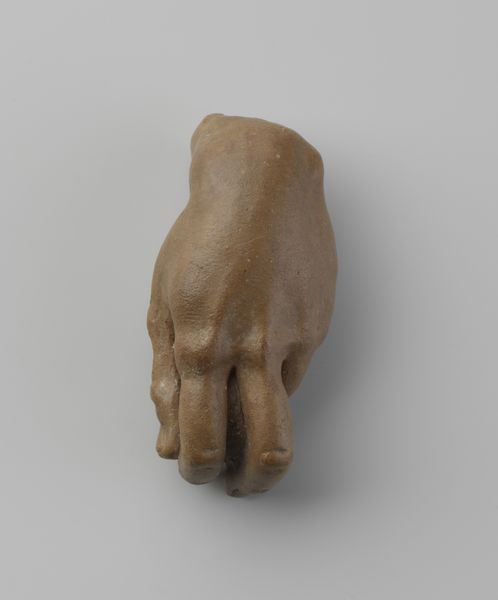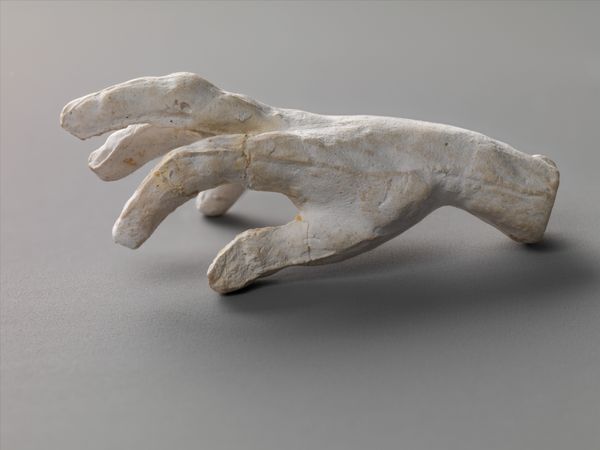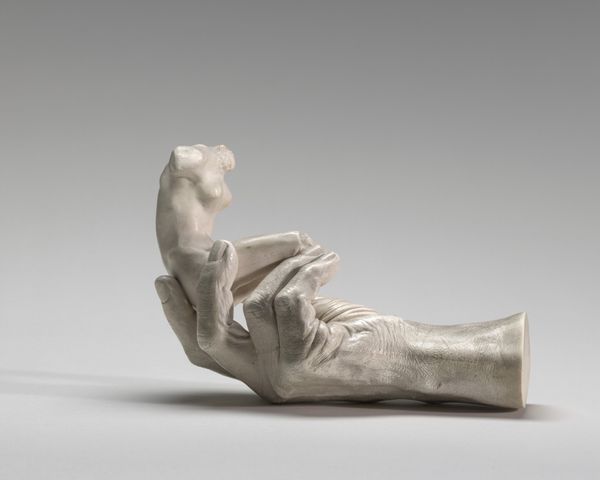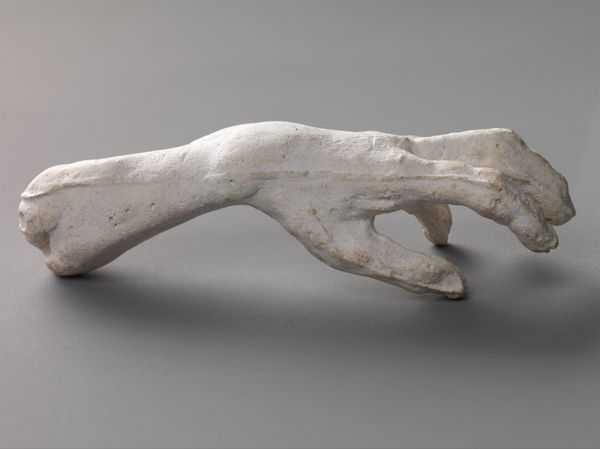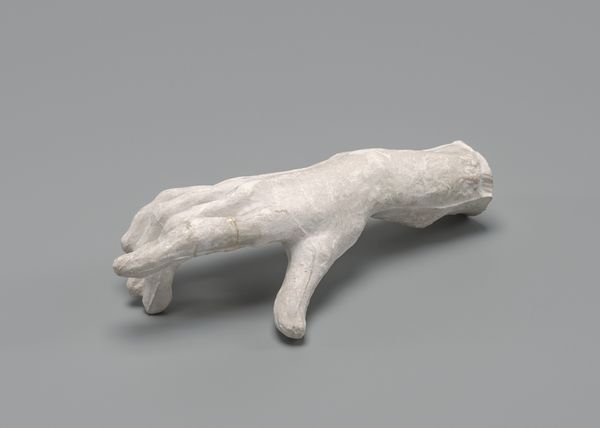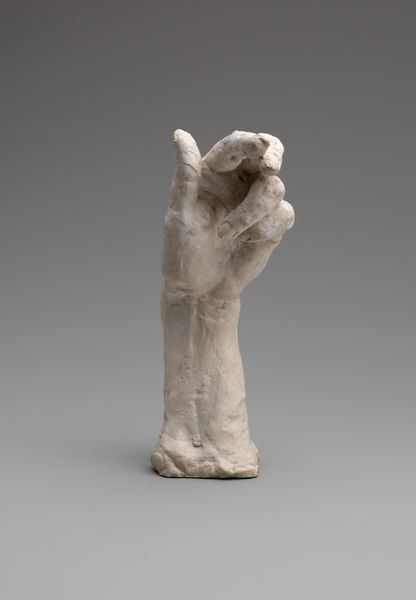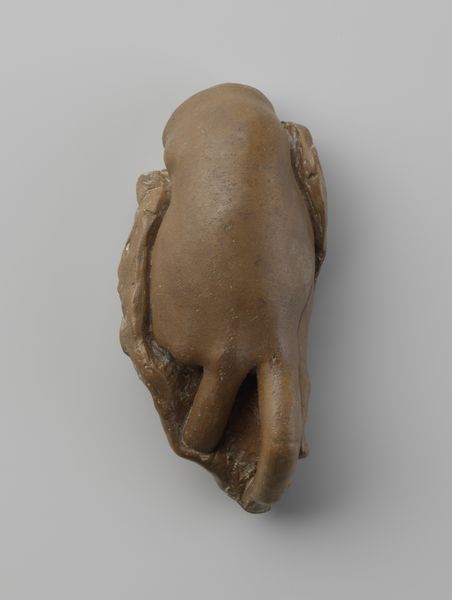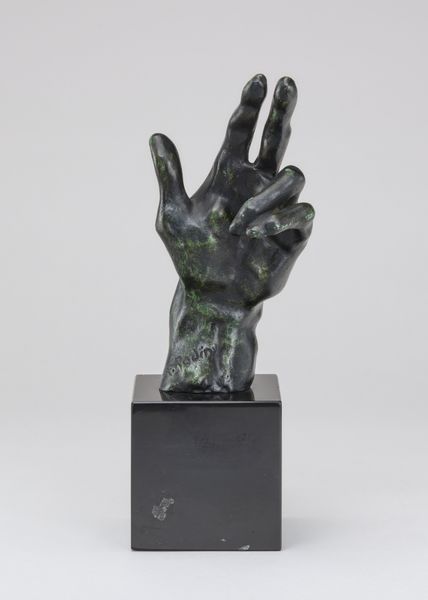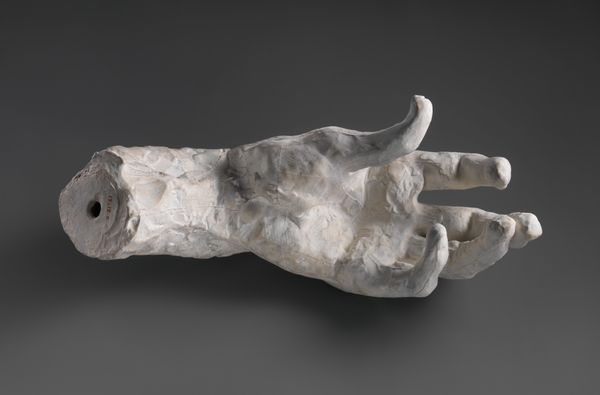
sculpture
#
figuration
#
sculpture
#
decorative-art
Dimensions: 4 1/4 × 2 × 1 1/4 in. (10.8 × 5.1 × 3.2 cm)
Copyright: Public Domain
This is Auguste Rodin's "Study of a Hand," made in an unknown year from plaster. The material is important here: plaster is often used for preparatory models, or for reproduction. Rodin was deeply engaged with the sculptural traditions of the past, but he also understood that in his own time, the value of sculpture was less about unique carving and more about the labor of modeling. Look closely, and you'll see the thumb and index finger are locked, as if holding a tool. The two raised fingers have a certain tension, as if they're about to complete a task. The whiteness of the plaster gives the hand a spectral, almost ghostly presence. Yet, the hand's form conveys purpose and potential energy. The gesture feels unfinished, caught in the act, as if waiting for direction to continue its work. Rodin’s radical idea was that even a fragment could possess profound presence. By focusing on the hand, he draws our attention to the importance of labor, skill, and the potential for the human body to express both thought and action.
Comments
No comments
Be the first to comment and join the conversation on the ultimate creative platform.
